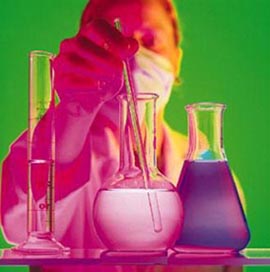
Hard water is one to be careful of. It's fairly common, really. High levels of calcium or hardness will "plate over" heat transfer surfaces. In the boiler or heat source this will greatly reduce the transfer of chemical energy (heat) to the fluid. It has the same effect on the tubing, radiators, coils, PEX, etc., that are asked to emit the energy from the fluid stream into the space.
If you have ever taken apart a boiler that has run hard water for extended periods, this buildup becomes very evident. Left unchecked it can start to occlude the small passageways in today's high efficiency equipment rather quickly. The hotter the surfaces the faster the sediment falls from the fluid and "glues onto" the transfer surfaces. An element removed from an electric water heater tank is a good demonstration of this.
Oftentimes boilers will "sound an alarm" to warn you. A scaled tube boiler can make some hauntingly weird sounds. Moaning, rumblings, popping, possibly even elk bulging sounds! Low mass copper boilers may even dance for you! If you come across such a system, it's time to act.
It is always best to identify the culprit. Consult with boiler treatment pros to prescribe the proper cleaner to "clean up" the specific mess. Hard water deposits generally require an acid-based cleaner, not unlike coil cleaners. Depending on the severity of the buildup, several fill and flush cycles may be needed to get back to "square one." Occasionally you will find a system so plugged it may need to be cleaned with special rods and/or brushes. Personally, depending on the age, the customer may be better served with a HX or complete boiler replacement. Some of the acid-based cleaners will also have a buffer chemical to be added after the acid bath.
Again, consult with the manufacturer for mix ratios and flushing procedures. Oh yeah, wear old clothes and use appropriate safety equipment when handling these cleaners. Rubber gloves and safety glasses are a must.
Sometimes you will find a slugged system. Generally it will be more of a smelly, gooey type of fluid. Oftentimes this is caused by a blend of "stuff" that you, as the installer, and the factory left behind. Cutting oils, assembly lubes, and pipe dope residue are all part of "boiler building." Add to that solder flux from an over-ambitious apprentice (or master) solderer. More pipe dope and maybe a dash of dirt, sawdust, or wood chips from installation. Heat to 180 and allow to cool and who knows what the final product will be. Suffice it to say, not a desirable heat transfer fluid or boiler/pipe coating!
Paramount to commissioning a new hydronic system should be a cleaning. Oftentimes this involves little more than a "power flush" of fill water just below the relief valve threshold. Not a bad first step, by any means. Take it a few steps further for the homeowner's and installer's peace of mind. Run a good hydronic system cleaner through 'er. Generally soap-based cleaners (falling to the alkaline side opposite of the acid-based scale removers) are recommended. It should be pumped into the system, run up to temperature, and circulated through all the zones for at least an overnight period. Flush, observe, and behold the concoction that appears before you. I like to run the first drain and flush into a 5 gallon plastic bucket, just to confirm my suspicions. Maybe even find that missing pencil reamer tip!
It may take a few cycles to get the system flowing clean and clear. Now it's time for the final fill. Again confirm the quality of the fill water. If suspect, bring a barrel of water from a good source, perhaps your shop or home. Brand new wells are often a poor source for boiler fill. Until they are flushed and tested, all kinds of dissolved O2 and sediment are spinning and reeling in their midst.
Fill a clear drinking water bottle with the site's water; let it settle to get a picture of the water quality. Pure filtered water is fairly easy to come by and reasonably inexpensive. For my glycol systems I purchase DI (deionized) water for about 7 cents a gallon in barrel quantities. Straight DI water would need to be buffered to adjust pH if you were to use it as a final fill in a water-only system.
Fill the system one final time, assure it is leak-free, and add a good hydronic system inhibitor. Have some stickers printed to label the boiler as to what, when, and how much treatment was added. Include your company name and phone number. Encourage, via the sticker, the owner to test the fluid every year or so to assure a long, healthy, efficient investment.
Be sure the chemicals you choose are compatible with the components of the system, of course. Check the Radiant Panel Association (RPA) membership list for companies skilled in the use and sales of these chemicals.
Reprinted from the October 2003 issue of the Radiant Panel Report newsletter with permission from the Radiant Panel Association (RPA). For more information on the RPA, visit www.radiantpanelassociation.org or call 800-660-7187. Robert "Hot Rod" Rohr is with the MAXROHR Corporation. He can be reached at hotrodradiant@aol.com.
Publication date: 12/01/2003

Report Abusive Comment